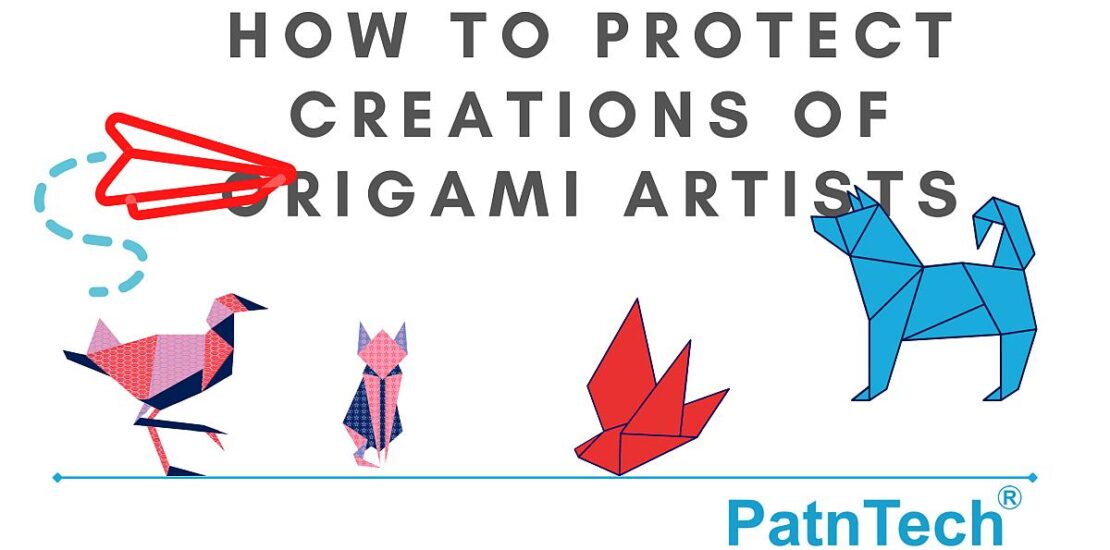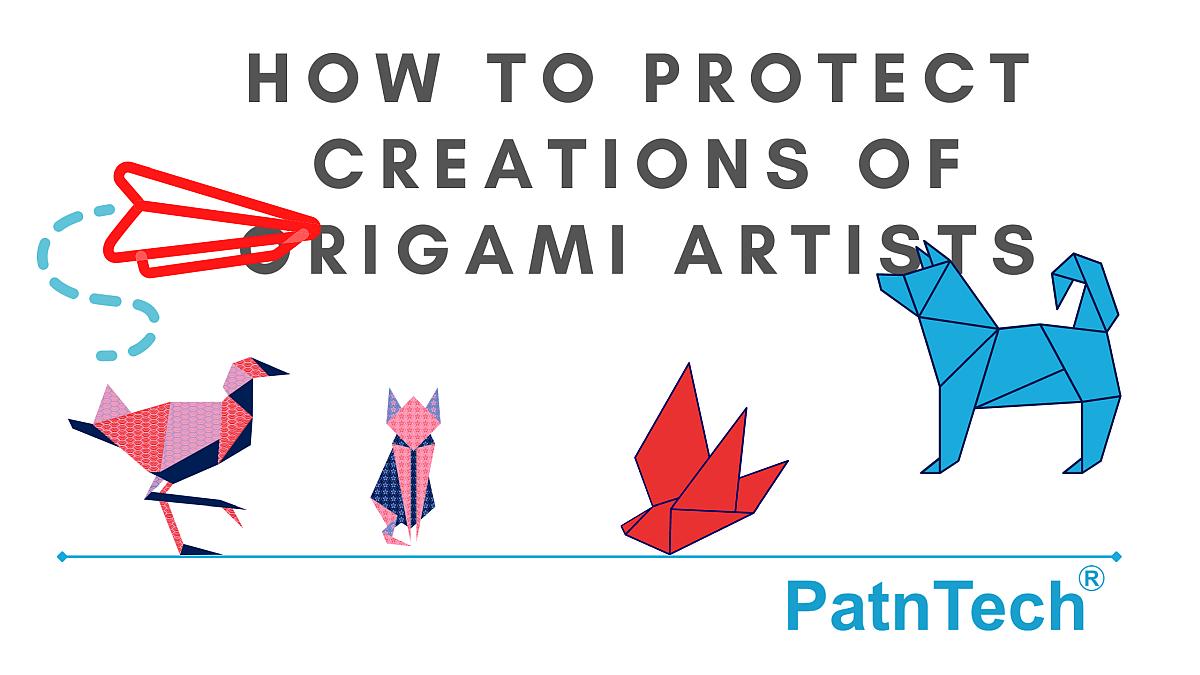Protection of Origami Artists
- January 8, 2021
- Posted by: Patntech
- Categories: Blog, Patents, Uncategorized


Creativity of an intellect brain can be best put into work when it has wider space of opportunity to experiment in the field. The aim of incorporating intellectual property laws is to make one feel secure about the rights and privileges a creator can enjoy while bringing out the best skills of oneself.
The intension of the IPR Law is to bring the laws which will protect the different art cultures which can be easily disappeared in the era of technology and digital space. Various art forms have high historical background and of rich values are at the edge of fading.
One of such art forms is Origami which is thickly prevalent in countries like Japan and China and in India with few artists. Origami is an art of paper-folding, it is achieved by folding a single sheet of square paper into a figurine. In due process of the art work, there is absolutely no use of cutting, gluing, use of taps or even making any sort of markings on the sheet. There are variations in Origami in which the usage of the cuts and gluing are needed for proper creasing and stiffness of the paper.
This art form is not limited to the traditional fancy decorative in letter and gifts, but in reasonable time period has gained the significance in different fields. The designs and the way of folding the sheet and making the exact shape without use of external accessories has gained the popularity amongst other fields of science and technology. Thus, the rise in the commercial value of the folding techniques has earned a place for itself under the copyright laws for the protection of the same and the creators.
To consider the impact of Origami, it can also be seen in widening the scope of satellite structuring, there are work in progress to make aircrafts also. There is already practice of origami-based pipes used in Japanese high-speed trains. The car accessories which are made with the help of origami folding to fit itself into the model of the car. It has played its role in designing of hardware products to make it compressed and easy to use. At educational institutions, the origami is considered as a tool to explain geometry, explaining fractions and solving problems. The paper folding technique are used to embody the cell membrane and protein and are also used in modelling DNA samples.
Origami is used in the manufacturing of miniature models of bridges and stadiums. The upcoming origami usage is also found in the making of robots, the planning of the structure having the folding methods incorporated from the ideas of the origami works.
Origami has been a way of learning to develop the Intellectual quotient amongst the kids, as it could indulge them into imaginative thinking, and could help with developing a skill of discovering new methods to solve problems. The Origami is also been considered to a good stress release to adults who are constantly occupied in work.
The ideas can also be used commercially and to bring origami communities where people can make a profit earning medium out of it. Thus, the art form is just not limited to creating sculptures, animals, flowers, designs etc, but a skilful art that has its place in various platforms.
Traditional origami is public domain and thus everyone can make use of it. A group of Origami artists have and have been protective about their designs being using in any form, directly or indirectly. The Origami works are protected under the Copyright Law worldwide. The USA has an International Organisation which recognises the work of such artist and their work – OrigamiUSA. It also aims to encourage, preserve the history and culture the art holds to further future generations.
The protection is extended of reserving the instructions on how to make an original design could potentially be copyrighted as an original work of art or literature. Further, making adaptations or slight modifications would amount to infringement as the absolute right to make adaptation and derivation work rests with the artist.
In India, the works of Origami are also covered under the Copyright Act. The works such as original literary, dramatic, musical and “artistic works” are covered. Under the scope of artistic work, Origami work is protected from using it commercially for profit, to reproduce to gain monetary profit without giving the credits or prior approval of the inventor, the work of artists cannot be used to teach at commercial places. The Act aims to reduce the copy or duplicating of the creases of paper-folding into any other form of art.
Origami art work has well-grounded rules and laws which are framed in order to avoid the infringements and make sure that the copyright is not a setback for the community but to develop the art work. The exclusive rights will ensure further promise of conserving the culture and relief to artists of their ideas being protected from being exploited for monetary benefit.
Author- Sneha V Kopparad
AIPPI World Congress, Yokohama, Japan
We are pleased to share that PatnTech’s Managing Partner, Mr. Chandrasekhar Raju, attended the AIPPI World Congress held in Yokohama, Japan, from September 13–16, 2025.
October 1, 2025What Is the Cost of PCT National Stage in Foreign Countries?
The Patent Cooperation Treaty (PCT) simplifies patent protection for companies and inventors worldwide
August 6, 2025The Importance of US Design Patents for Innovators: Insights from PatnTech
In today’s competitive marketplace, innovation drives success, and protecting those innovations is crucial.
July 21, 2025How to Apply for a US Design Patent: Your Step-by-Step Guide
A US design patent protects the unique ornamental design of an article of manufacture. It helps businesses and inventors safeguard their innovative creations.
July 10, 2025




